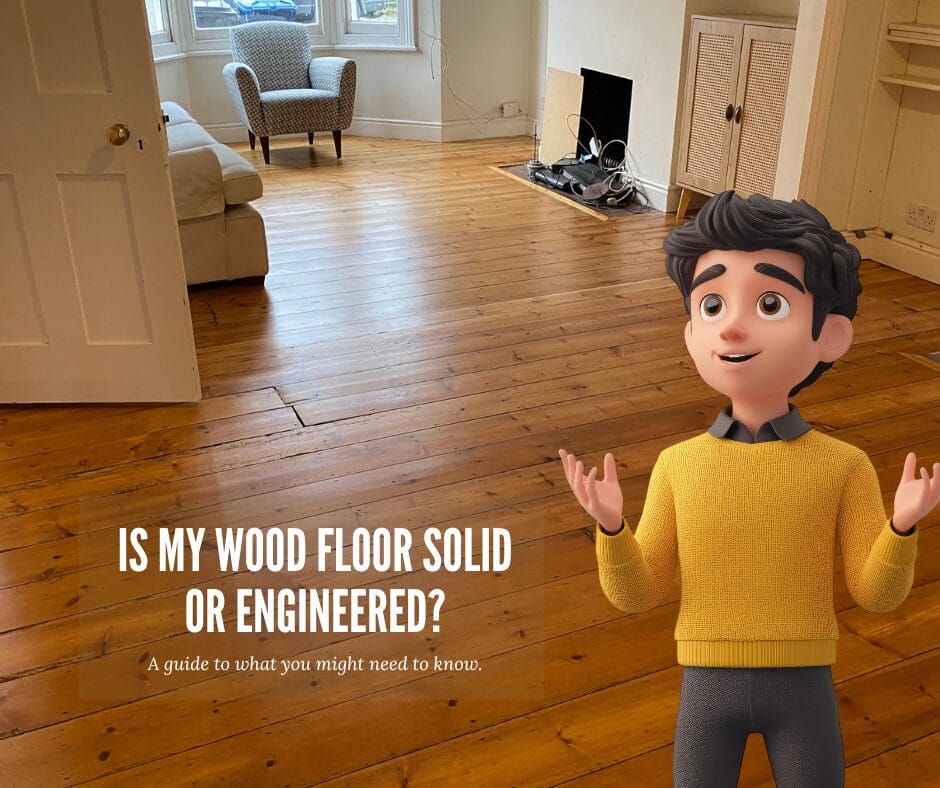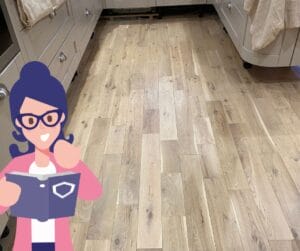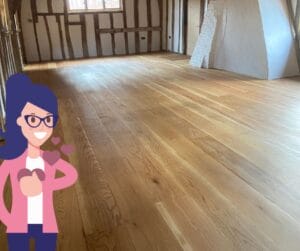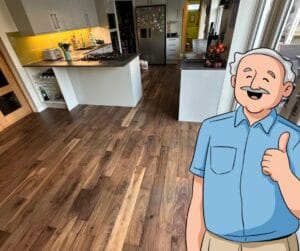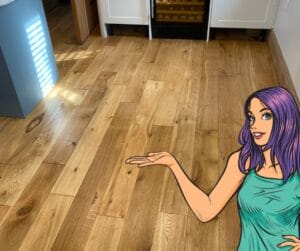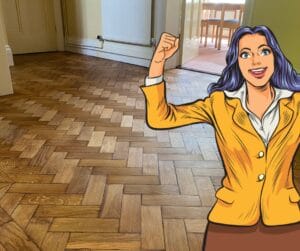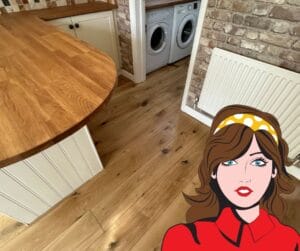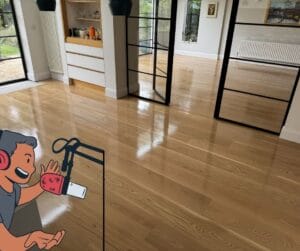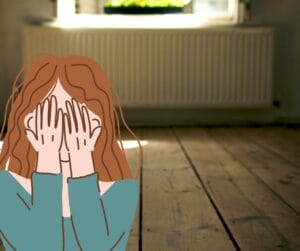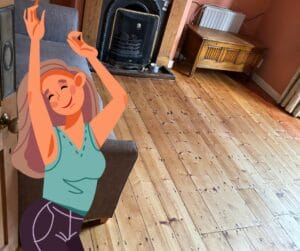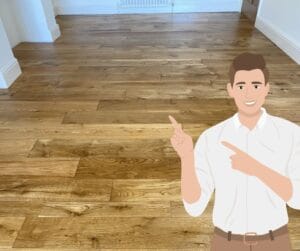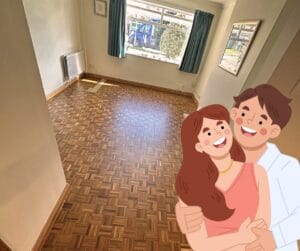Welcome! Whether you’ve just discovered us or you’re one of our lovely regular readers… hello, and thank you for stopping by! At Floor Sanding Cambridge, we’re all about helping homeowners across Cambridgeshire make sense of wood floor care with no fluff and plenty of practical know-how. Today, we’re diving into a common question we get asked a lot: “Is My Wood Floor Solid or Engineered?” Let’s get stuck in and find out…
Here’s How to Tell in Your Cambridgeshire Home
You absolutely love your wood floor—but it’s looking a little tired lately. Scuffs, scratches, and maybe a few dents here and there have you dreaming of a full restoration. But before we dive into sanding and finishing, there’s an important question we always ask first: Is your floor solid wood or engineered?
If you’re not sure (and don’t worry, many people aren’t!), let’s break it down in a simple, no-nonsense way.
What’s the Difference Between Solid & Engineered Wood Floors?
It all comes down to how they make the boards:
- Solid wood flooring is what it says on the tin... real timber all the way through, from top to bottom.
- Engineered wood flooring, on the other hand, is made with a core of plywood or high-density fibreboard (HDF), topped with a thinner layer of real hardwood on the surface.
So, while both look like real wood on the surface (because they are!), what lies beneath makes all the difference—especially when it comes to sanding and restoration.
Why Engineered Wood Exists (and Why It’s Brilliant)
You might be thinking, “Well surely solid wood must be better?” But here’s the twist.. they created engineered wood for a very clever reason: stability.
Wood is a natural material and loves to expand and contract with changes in humidity. Solid wood floors are especially prone to opening up gaps or cupping when moisture levels shift. Engineered floors, thanks to their layered construction, handle those changes much better. They’re also ideal for homes with underfloor heating, which would cause solid boards to move and creak more than you’d like.
Which One Lasts Longer… Solid or Engineered Wood?
Here’s where most people are surprised…
You’d think a solid floor would last longer because it’s thicker, right? But the truth is, you can only sand a wood floor down so many times… solid or engineered. Once you hit the tongue and groove connection, that’s it. Keep going past that, and you risk damaging the structure of the board.
You can sand a good-quality engineered wood floor two or even three times (depending on the thickness of the top layer), which for most homeowners is more than enough over the life of the floor.
So, don’t write off engineered wood—it’s not a second-best option. It’s just designed differently.
How to Check What Kind of Wood Floor You Have
Now for the practical part! If you’re still not sure what’s beneath your feet, here’s a little trick:
👉 Take a look under the threshold strip (the bit of trim at the doorway). This will often reveal a side profile of the flooring boards. If you can see a single solid piece of wood from top to bottom, it’s likely solid. If there are visible layers—usually a few thinner layers with a top one that looks like hardwood—your floor is an engineered wood floor.
If you’re still not certain or you don’t fancy removing anything, no problem. At Floor Sanding Cambridge, we’re happy to take a look for you and give honest advice on what’s possible with your floor.
Still Unsure? Let Us Help
Whether your floor’s engineered or solid, we can help you bring it back to life. We’ve restored floors in homes across Cambridge, Ely, Newmarket, and all around Cambridgeshire—and we know exactly how to work with each type.
📞 Want us to take a look? Just give us a shout—we’ll pop round, have a quick look, and tell you what your options are. No jargon. No pressure. Just the facts.

